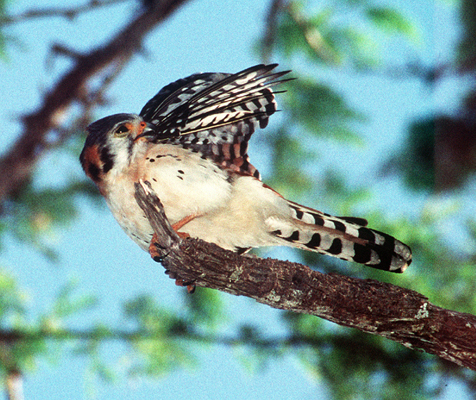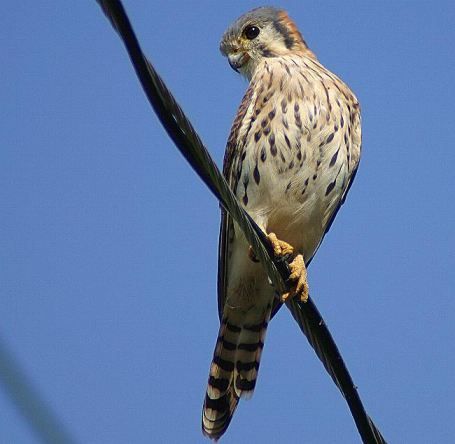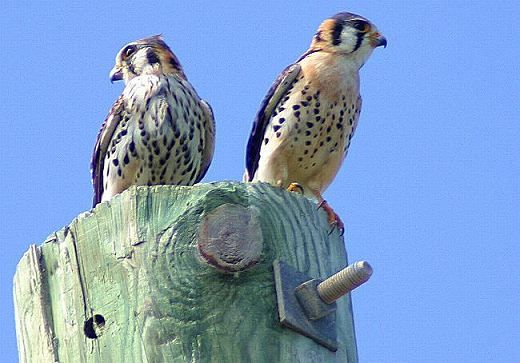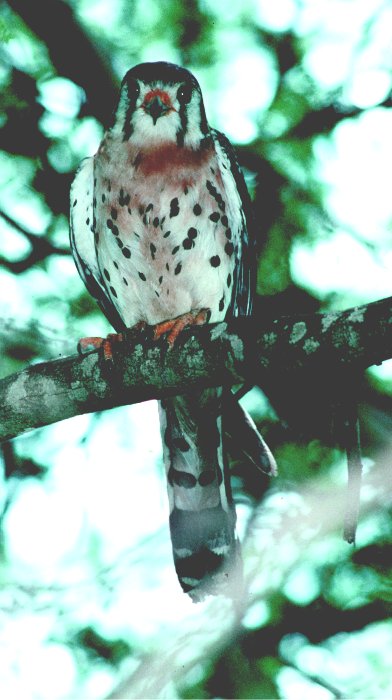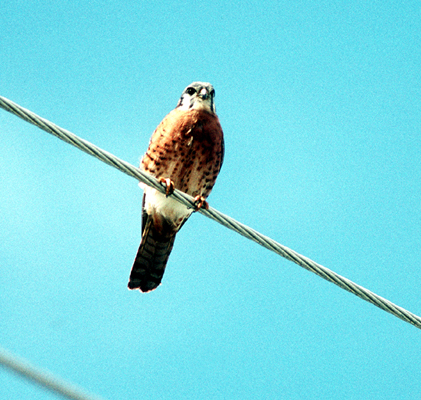|
American Kestrel Falco sparverius Cernícalo Americano, Halcón Común
|
 |
|
Photo: G. Beaton |
|
IDENTIFICATION: A small falcon with distinct plumages in males and females. Both sexes have a reddish tail and prominent black lines below and behind the eye. The male has blue wings, spotted undersides, and black "eye spots" on the back of the neck; while the female has reddish brown wings and streaked undersides. Even from a distance, a perched kestrel can often be identified by its habit of dramatically bobbing its long tail up and down. Length: 23-30 cm.; weight: males 80-143 g., females 84-165 g.; wingspan 51-61 cm. VOICE: The call is a string of "killy" notes; also a wheezy note when begging for food. Audio 2 (R. DeWitt; M. Oberle). HABITAT: Farms, pastures, and open country; towns with gardens and trees, especially on the drier, southern side of the island. HABITS: Often seen on an exposed perch (tree branch, palm frond, or telephone pole) as it searches for food. It will drop from the perch to catch a lizard or large insect, such as a grasshopper or cricket, but will also hover over one place looking for prey, and then attack from the air. Whereas insects and lizards are common foods, it less commonly feeds on birds, mice, or bats. It sometimes stores food for later meals. Kestrels in Europe have been documented to track rodents by detecting rodent urine and feces in ultraviolet light, and then targeting areas with signs of greater rodent activity. It is not known if kestrels in Puerto Rico use the same strategy. Kestrels can be aggressive and will chase Red-tailed Hawks from their territory. The nest is an unimproved ledge, tree hole, artificial nestbox, or simply a flat spot in the top of a royal palm. Both sexes incubate 2-4 eggs for 27-32 days and then feed the young until they fledge at 29-31 days. STATUS AND CONSERVATION: A common nesting species especially in open country; probably became more common after forests on the island were cleared over the last few centuries. RANGE: Breeds from Alaska to Tierra del Fuego in Argentina. Most individuals from Canada and the northern USA migrate south in winter, and some travel to the Caribbean. TAXONOMY: FALCONIFORMES; FALCONIDAE; Falconinae. Formerly called the Sparrow Hawk. There are 17 subspecies, including 3 in the Caribbean. The subspecies that occurs in Puerto Rico, Falco sparverius caribaearum, also breeds from the Virgin Islands east to Grenada. The Hispaniolan subspecies, Falco sparverius dominicensis, which has lighter undersides, has been documented on Mona Island. The race found in the Bahamas and Cuba (Falco sparverius sparverioides) has both a light-breasted color form and a dark morph with reddish undersides. |
|
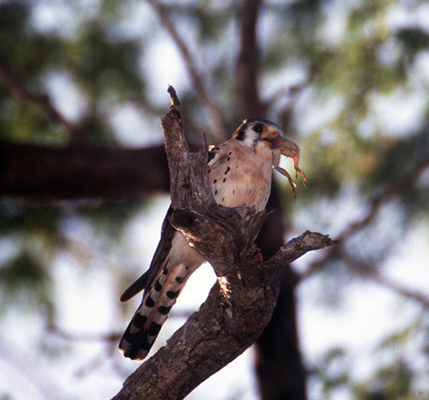 |
|
|
Photo: G. Beaton
|
